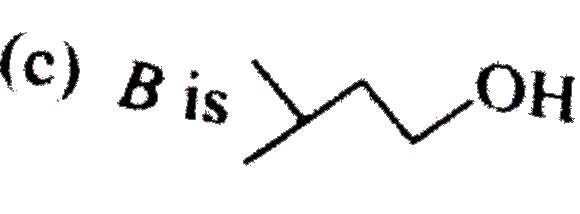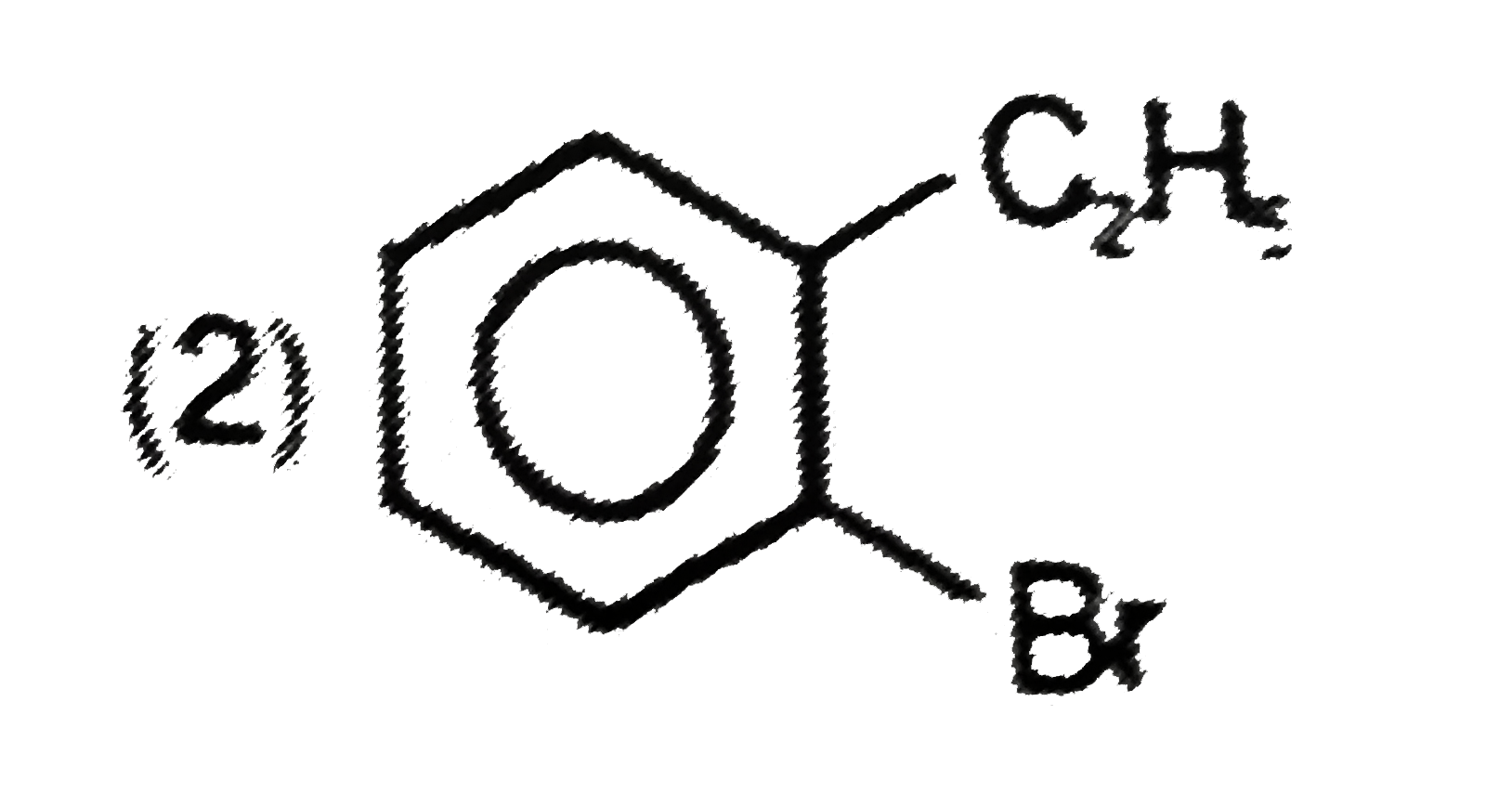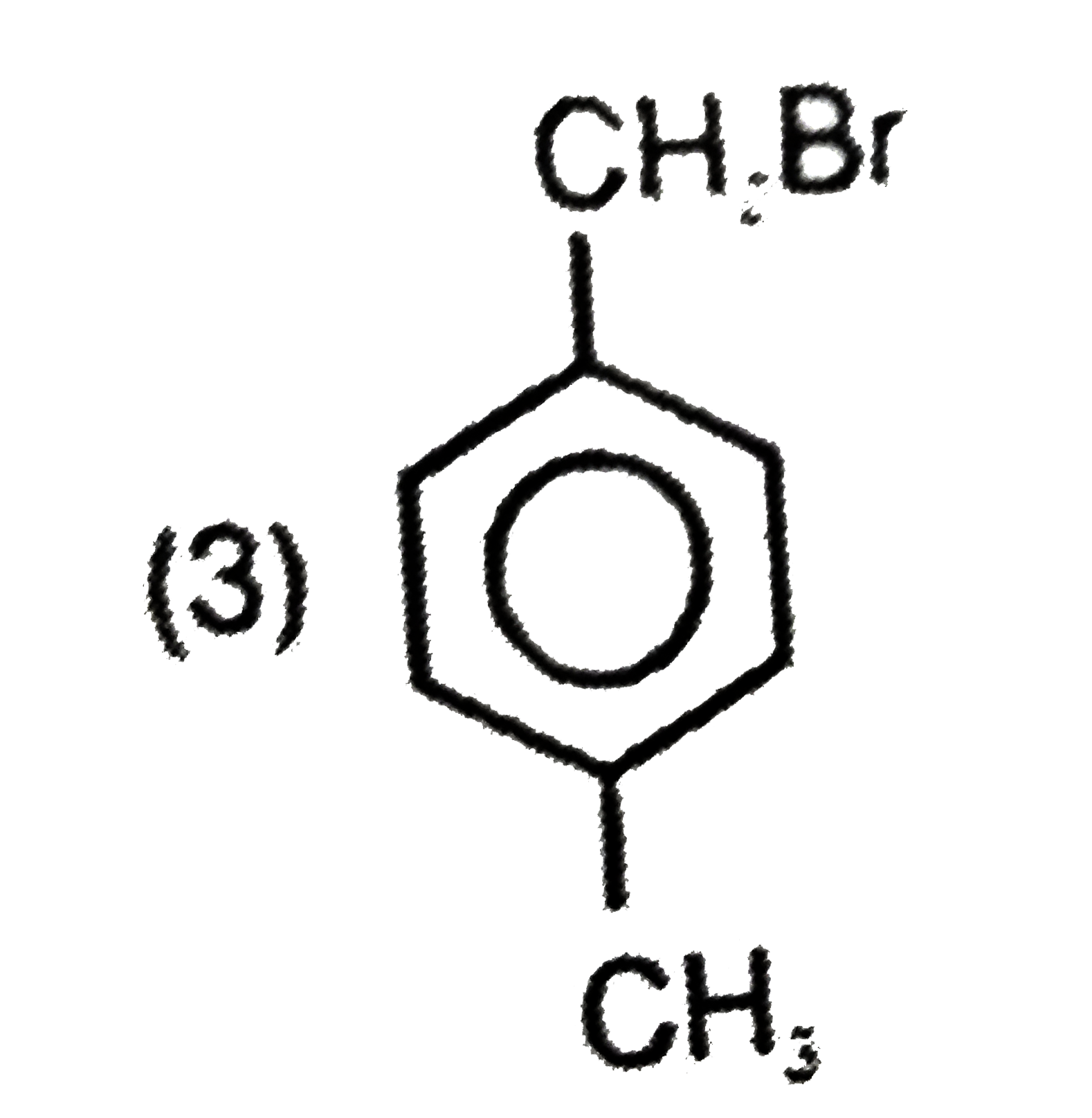Identify A, B, and C,
i. Isomeric alcohols (A), (B), and (C) (C5H12O).
ii. (A) and (B) react with chromic acid solution. (B) gives an acid (D).
iii. Reactivity with HBr is C>A>>B . All give the same compound, C5H11Br (E).
iv. Only (A) is oxidised by NaOI.
i. Zero DU in all alcohols suggests the absence of ring or (C=C) or (C≡C) bond.
ii. (B)ROH H2CrO4−−−−→ Acid (D) suggests that (B) is 1∘
(A)ROH H2CrO4−−−−→ No acid suggests that (A) is 2∘
iii. Reactivity with HBr suggests, (C) is 3∘ ROH. Reaction of (A) with NaOI (Iodoform test) suggests. ⎛⎜
⎜⎝R−C∣OHH−CH3⎞⎟
⎟⎠ type of alcohol.
(A), (B), and (C) HBr−−→ Same C5H11Br (E) suggests that rearrangement is taking place by H− or Me shift.
iv.  [O]H2CrO4→ No reaction
[O]H2CrO4→ No reaction
Topper's Solved these Questions
- ALCOHOL,PHENOL AND ETHERSBOOK - CENGAGE CHEMISTRYCHAPTER - ALCOHOL,PHENOL AND ETHERSEXERCISE - Exercises Concept Application
33 Videos
- ALCOHOL,PHENOL AND ETHERSBOOK - CENGAGE CHEMISTRYCHAPTER - ALCOHOL,PHENOL AND ETHERSEXERCISE - Exercises Linked Comprehension
60 Videos
- ALCOHOL,PHENOL AND ETHERSBOOK - CENGAGE CHEMISTRYCHAPTER - ALCOHOL,PHENOL AND ETHERSEXERCISE - Solved Examples
17 Videos
- ALIPHATIC AND AROMATIC ALDEHYDES AND KETONESBOOK - CENGAGE CHEMISTRYCHAPTER - ALIPHATIC AND AROMATIC ALDEHYDES AND KETONESEXERCISE - Archives Subjective
29 Videos
Similar Questions
Primary alkyl halide C4H9Br (A) is reacted with alcoholic KOH to give compound (B). The ompound (B) is reacted with HBr to give (C) which is an isomer of compound (A). Write the structures of the compounds (A), (B) and (C).
View SolutionCompound (A) C8H9Br, gives a white precipitate when warmed with alcoholic AgNO3. Oxidation of (A) gives an acid (B),C8H6O4. (B) easily forms anhydride on heating. Identify the compound (A)
View Solution
Knowledge Check
A primary alcohol, C3H8O (A) on heating with sulphuric acid undergo dehydration to give an alkene, B. B when reacted with HCl gave C, which on treatment with aqueous KOH gives compound D, C3H8O. A and D are
Afunctional isomersBposition isomersCchain isomersDstereo isomersCompounds A, B and C are isomeric alcohols with formula C5H12O. A on oxidation given ketone, B gives acid while C is not oxidised, A gives test with I2/NaOH. The three isomerice alcohols react with HBr with decreasing rates C>A>B. Identify A and B.
A B
B C
C D
D
Compound (A), C6H3Br, gives a white precipitate when warmed with alcoholic AgNO3. Oxidation of (A) gives an acid (B). C6H3O4. (B) easily forms anhydride on on heating. Identify the compound (A).
A B
B C
C D
D
Compound (A), C8H9Br, gives a white precipitate when warmed with alcoholic AgNO3 . Oxidation of (A) gives an acid (B), C8H6O4 . (B) easily forms anhydride on heating. identify the compound (A).
View SolutionCompound (A) ,C8H9Br gives a white precipitate when warmed with alcoholic AgNO3 Oxidation of (A) gives an acid (B) C8H6O4 (B) easily forms anhydride on heating Identify the compound (A)
View SolutionCompound (A) ,C8H9Br gives a white precipitate when warmed with alcoholic AgNO3 Oxidation of (A) gives an acid (B) C8H6O4 (B) easily forms anhydride on heating Identify the compound (A)
View SolutionCompound (A), C8H9Br, gives a white precipitate when warmed with alcoholic AgNO3. Oxidation of (A) gives an acid (B) C8H6O4. (B) easily forms anhydribe on heating. Identify the compound (A).
View SolutionCompund (A)C8H9 Br gives a white precipitate when warmed with alcoholic AgNO3 Oxidation of (A) gives an acid (B) C8H6O4 (B) easily anhydride on heating Identify the compound (A) .
View Solution
